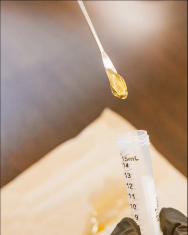Guidelines for Sampling Cosmetics and Drugs Introduced in India

The Regulatory Guidelines for Sampling of Drugs, Cosmetics & Medical Devices were approved and released by the Central Drugs Standard Control Organization (CDSCO) of India on February 9, 2024. The purpose of these guidelines is to improve and standardize the sampling process for these items across the country.
The published guidelines consist of 10 sections and 5 Annexes. The guidelines are aimed at selecting samples and locations for drugs, cosmetics, and medical devices at various locations, including manufacturing facilities, wholesale outlets, retail outlets, and government distribution channels. It maintains a centralized monthly list of Not of Standard Quality (NSQ)/Spurious drugs and publishes it on the CDSCO website to prevent further use. It also helps in effective monitoring of the quality and efficacy of drugs.
Key Highlights of the Guidelines
| Sr No. | Topic | Content |
| Introduction | The Guidelines introduce a uniform drug sampling methodology to ensure effective surveillance of the quality and efficacy of drugs and cosmetics in the market. | |
| Sampling plan | Drug inspectors must collaborate with their controlling authority to prepare monthly and annual sampling plans, ensuring efficient use of resources and communication, and share them with headquarters for review and variety. | |
| Selection of Sampling | Drugs Inspectors select samples from different therapeutic categories, formulations, and manufacturers, ensuring all identified risks are utilized for six months, and excess sampling must be approved by the controlling authority. | |
| Selection of sampling location | A list of approaches is provided in this section which is not exhaustive and is only indicative | |
| Number of Samples | Each Drugs Inspector shall collect at least 10 samples per month comprising of following : a. 9 samples of drugs (Active Pharmaceutical Ingredients (API), excipients and formulations) b. 1 sample of cosmetics/ medical device. | |
| Quantity of Samples | Samples are essential for laboratory testing and re-testing, with quantities varying. Insufficient samples may result in reduced testing, with portions divided into primary/secondary labels. | |
| Timelines | To avoid delays in testing and laboratory reports, it is critical that drug alerts and product recalls are issued promptly to stop the use of identified NSQ products. | |
| Database/Monitoring | Drugs Inspectors must submit monthly sampling data to their authority for execution and use this data to plan the next month’s sampling plan. | |
| NSQ / Spurious Alerts | NSQ reports from state and central laboratories must be submitted in the Excel format given in this section, with test reports preferably uploaded on the CDSCO website by the 10th of each month. | |
| Testing Laboratories | List of testing laboratories at central and state level |
List of Annexes
Annexure-1: Quantity of Drugs Sample Required for Complete Analysis
Annexure-2: Quantity of Cosmetics Sample Required for Complete Analysis
Annexure-3: Quantity of Vaccine Sample Required for Complete Analysis
Annexure-4: Quantity of Biological/ Medical Devices Samples
Annexure-5: Quantity Required for Complete Analysis of Medical Device Samples
We acknowledge that the above information has been compiled from Central Drugs Standard Control Organization .



